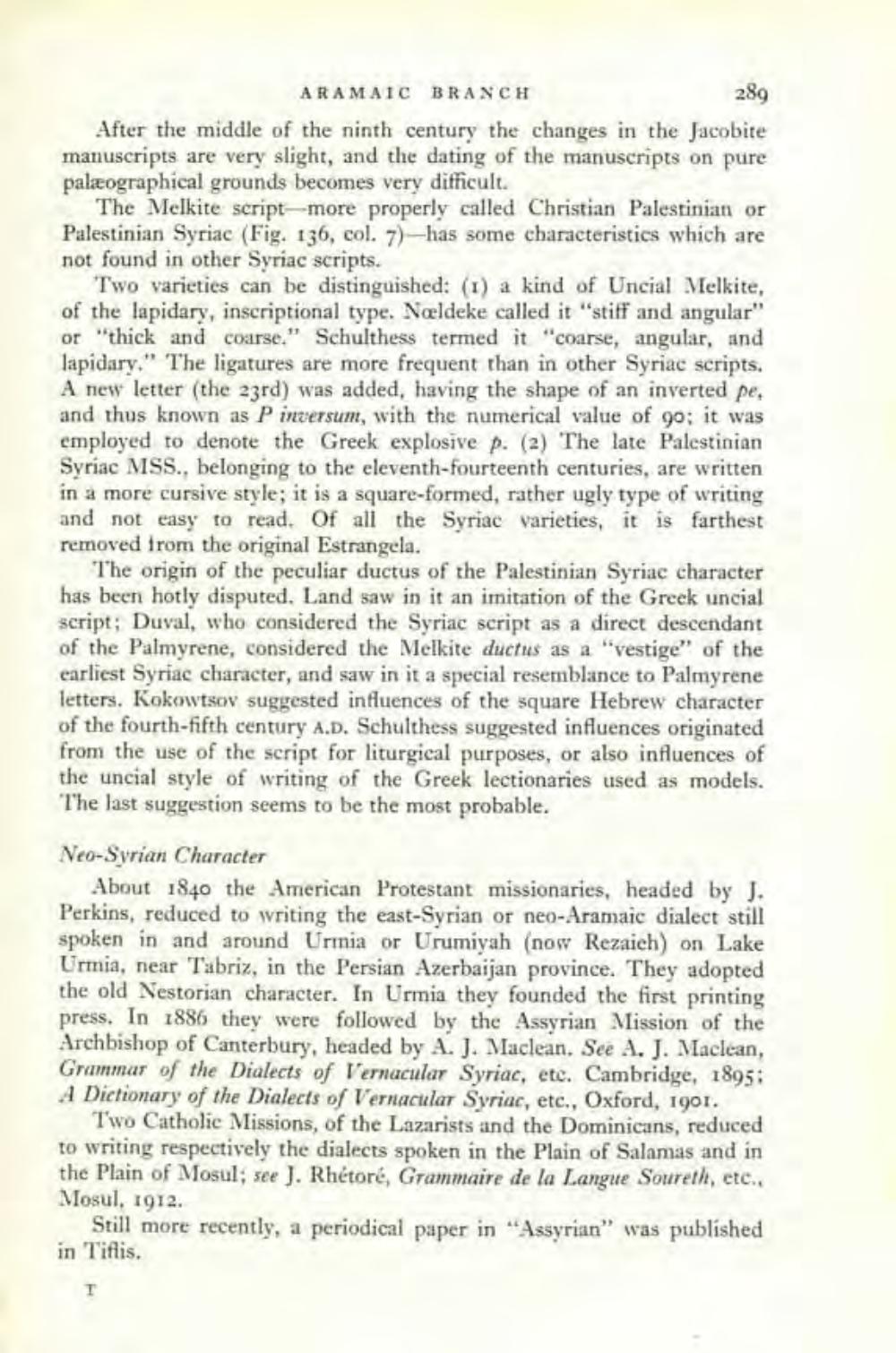________________
ARAMAIC BRANCH
289 After the middle of the ninth century the changes in the Jacobite manuscripts are very slight, and the dating of the manuscripts on pure palæographical grounds becomes very difficult.
The Melkite script more properly called Christian Palestinian or Palestinian Syriac (Fig. 136, col. 7) -has some characteristics which are not found in other Syriac scripts.
Two varieties can be distinguished: (1) a kind of Uncial Melkite, of the lapidary, inscriptional type. Nældeke called it "stiff and angular" or "thick and coarse." Schulthess termed it "coarse, angular, and lapidary." The ligatures are more frequent than in other Syriac scripts. A new letter (the 23rd) was added, having the shape of an inverted pe. and thus known as P inversum, with the numerical value of go: it was employed to denote the Greek explosive p. (2) The late Palestinian Syriac MSS., belonging to the eleventh-fourteenth centuries, are written in a more cursive style; it is a square-formed, rather ugly type of writing and not easy to read. Of all the Syriac varieties, it is farthest removed from the original Estrangela.
The origin of the peculiar ductus of the Palestinian Syriac character has been hotly disputed. Land saw in it an imitation of the Greek uncial script; Duval, who considered the Syriac script as a direct descendant of the Palmyrene, considered the Melkite ductus as a "vestige" of the earliest Syriac character, and saw in it a special resemblance to Palmyrene letters. Kokowtsov suggested influences of the square Hebrew character of the fourth-fifth century A.D. Schulthess suggested influences originated from the use of the script for liturgical purposes, or also influences of the uncial style of writing of the Greek lectionaries used as models. The last suggestion seems to be the most probable.
Neo-Syrian Character
About 1840 the American Protestant missionaries, headed by J. Perkins, reduced to writing the east-Syrian or neo-Aramaic dialect still spoken in and around Urmia or Urumiyah (now Rezaich) on Lake Urmia, near Tabriz, in the Persian Azerbaijan province. They adopted the old Nestorian character. In Urmia they founded the first printing press. In 1886 they were followed by the Assyrian Mission of the Archbishop of Canterbury, headed by A. J. Maclean. See A. J. Maclean, Grammar of the Dialects of Vernacular Syriac, etc. Cambridge, 1895; A Dictionary of the Dialects of Vernacular Syriac, etc., Oxford, 1901.
Two Catholic Missions, of the Lazarists and the Dominicans, reduced to writing respectively the dialects spoken in the Plain of Salamas and in the Plain of Mosul; see ). Rhétoré, Grammaire de la Langue Soureth, etc.. Mosul, 1912
Still more recently, a periodical paper in “Assyrian" was published in Tiflis.




